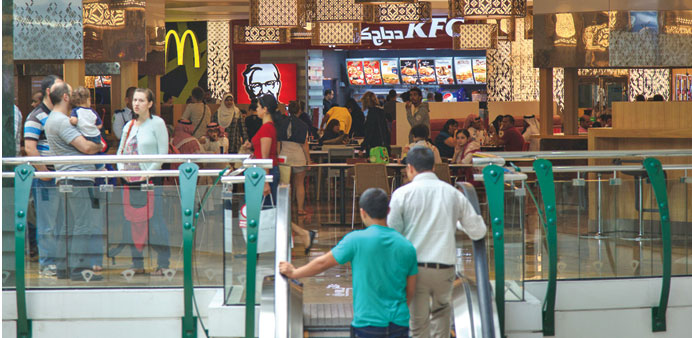Despite the future supply of competing malls under construction, currently operating malls hold their identity on the sectors with appreciating rents and higher occupancies, the Aredc report says.
By Santhosh V Perumal/Business Reporter
Qatar’s retail real estate, which is on the bottom of the recovery cycle, is expected to be a “centre of investment” owing to high occupancy, long term commitments from tenants and decent rents, according to Al Asmakh Real Estate Development Company (Aredc).
Moreover, Qatar, which now has 13 operational malls, may see a total of 27 malls in the future, necessitating the need for branding, since major retail activities would be managed from the malls by 2018, and that mall density as proportion to population is also slated to increase, the valuation and research department of Aredc said in a report.
The present gross yields from the retail segment, other than the malls, are in the range of 5% to 6.5%, it said.
Unlike the commercial office sector, overall occupancy level is genuinely high in retail segments, it said, adding the most of the shops by the streets and in random alleys are occupied. Approximately, 25% to 30% tenants are restaurants and food related businesses.
Despite the future supply of competing malls under construction, currently operating malls hold their identity on the sectors with appreciating rents and higher occupancies, the report said.
The average rents in top three malls (City Center, Villaggio and Landmark) are QR310 per sq.m per month. These malls have average occupancies up to 90%, it said, adding rents in other malls vary in between QR210 to QR250 per sq.m per month.
“If something that the malls require is branding,” Aredc said, highlighting that at present, it is fine as Qatar has limited to 13 operational malls. However, upon completion of all under construction malls, the total number will be around 27.
“At that time, the segmentation of malls would be necessary so that the outside visitors can select a mall based on the shopping requirements,” it said.
Qatar is considered as one of the richest countries in terms of per capita income; therefore, residents of Qatar have a greater expense appetite. Owing to this major reason, nearly 14 malls are planned with approximately net leasable area (NLA) of 1.228mn sq.m.
Out of this figure, nearly six malls would be unwrapped in next 8–18 months, which would deliver about 384,500 sq.m areas, about 67% of existing supply.
By the end of 2015, the anticipated NLA is nearly 954,500 sq.m and upon completion of all the under construction malls, the total amount of malls would be 27 with the expected NLA of 1.8mn sq.m.
Although the un-organised retail sector secures 70% of total retail spaces at present, it said upon completion of all on-going downtown enhancement projects and the 14 malls, the mall percentage share will change to 65% from the current 18%. “This means at the end of 2018, the major retail activities would be managed from the malls,” it added.
Terming that the surge in new malls not only enhance organised retail spaces but also supports neighborhood developments, the report said Ezdan Mall in Al Wakrah would motivate households to shift from Doha to Al Wakrah. Similarly, Doha Mall in Abu Hamour would attract households to get their housings in to neighbouring areas such as Ain Khaled and Barwa City.
At present, organised retail space within Qatar offers nearly 285 sq.m for every 1,000 people, which would reach 900 sq.m upon completion of all under construction malls. At present Dubai offers 1,380 sq.m of retail space per 1,000 people, whereas, in the US, the ratio is 1,030 sq.m per 1,000 people.



